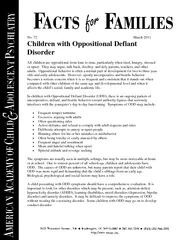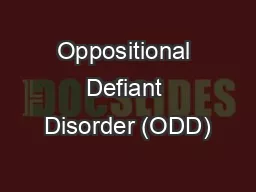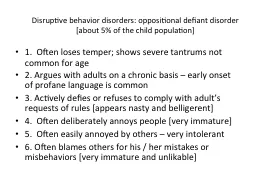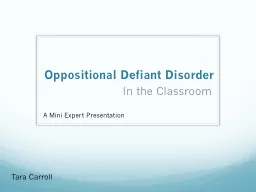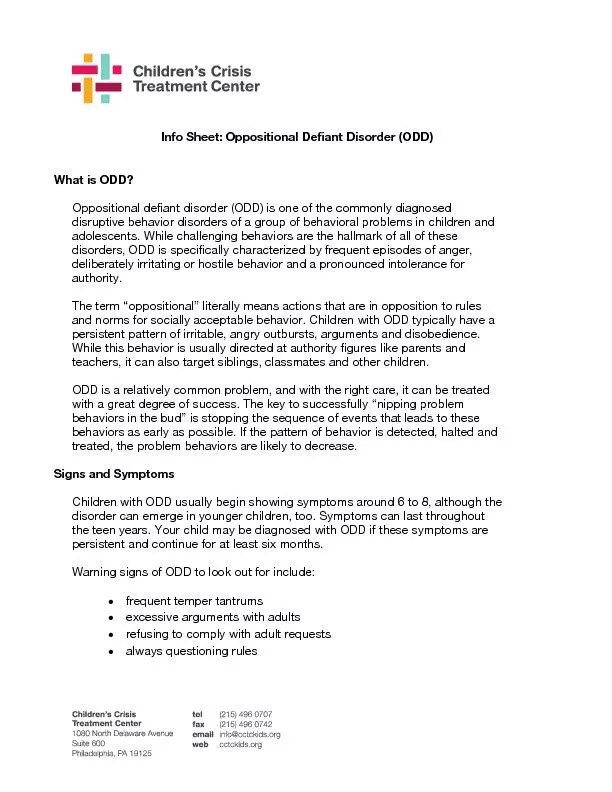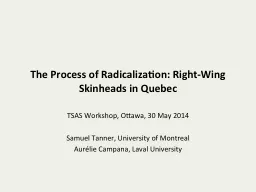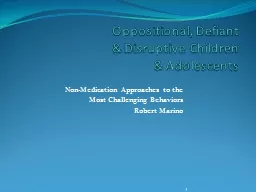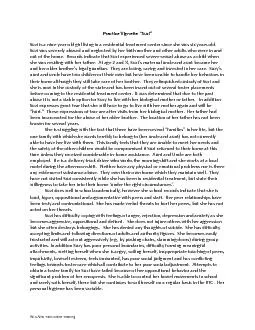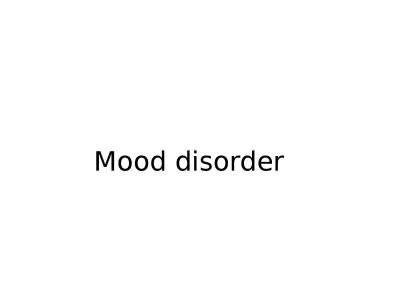PPT-Oppositional Defiant Disorder
Author : liane-varnes | Published Date : 2017-04-08
DSM5 Definition of ODD Onset amp Gender differences Age of onset is typically 12 to 13 years of age There are early diagnosis of 2 to 5 years of age According to
Presentation Embed Code
Download Presentation
Download Presentation The PPT/PDF document "Oppositional Defiant Disorder" is the property of its rightful owner. Permission is granted to download and print the materials on this website for personal, non-commercial use only, and to display it on your personal computer provided you do not modify the materials and that you retain all copyright notices contained in the materials. By downloading content from our website, you accept the terms of this agreement.
Oppositional Defiant Disorder: Transcript
Download Rules Of Document
"Oppositional Defiant Disorder"The content belongs to its owner. You may download and print it for personal use, without modification, and keep all copyright notices. By downloading, you agree to these terms.
Related Documents


